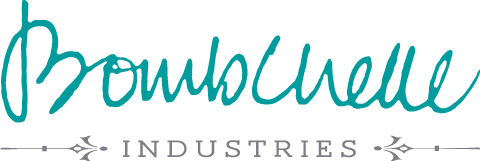You’ve heard me talk about how your workspace affects your work before – this isn’t the first time you’ve heard it from me. (Unless you’re new around here, in which case, hi! Nice to meet you.) But I bet you didn’t think it extended to blanket forts, didya?
Let me explain a bit. In Making Ideas Happen (one of the books I rave about every time I get a chance), a study is mentioned, the results of which are really fascinating and have some obvious uses for designing your workspace. The study showed that smaller, more confined spaces with lower ceilings help people focus and get work done without getting distracted. Meanwhile, open spaces with high ceilings are great for brainstorming and loose, free thinking. And, possibly the most interesting part of all: changing a person’s perception of the space is just as effective as changing the space itself.
(This is where I get geeky-excited and have to calm myself down before proceeding. I love this stuff!
…Okay, I’m done.)
What this means for you…
…is that, knowing this, you can change the way you perceive a space to create the effect you want – to help you focus on writing your book, or to brainstorm a solution to your latest problem. Or, if you want, you can change the space you’re working in to achieve that effect. No, I’m not suggesting you have two offices. There are lots of other ways – see below.
Ways this could work:
- Need to brainstorm, or find a solution to a problem? Create some objectives to get them first & foremost in your mind. Hint: Try wording these as questions; for example, instead of saying “I need to rework my services so that they fits my customers’ needs better”, say “What are my customers’ needs? Where are my services currently meeting them? Where are they not meeting them? How can I get more of the first, and less of the second?” Once you’ve got your objectives, hit the town! There are probably all kinds of places that meet the “open + high ceilings” requirements (museums, art galleries, hotel lobbies, libraries, a coffee shop inside a book store) that aren’t going to care if you wander in with a notebook and park yourself for a while. Not only are you changing your environment, which tends to remove stuckness, you’re actively choosing a new environment that suits your needs at this moment.
- Need to focus on one project, and knock it out of the ballpark? This is where the blanket forts come in. Seriously – make a blanket fort. (You’ll need to make sure the lighting’s good, I suppose.) Or get standing screens and set them up around where you’re working. Wear ear plugs. Experiment with various ways of essentially creating a cocoon, a safe space, for you to be separated from everything else – leaving only you, your focus, and your work.
- Need to know how you can use this in everyday life, when switching back & forth between focusing and brainstorming? The best way to do this is to create a container for each of these functions in your work. What this looks like is deciding when you’ll work on each of these things, and separating them out. For example: in a given day, you’re going to do brainstorming, idea generation, & problem solving on project X, and also work in a more focused fashion on project Y and Z. You set aside two hours in the morning, after your morning routine, to brainstorm on project X – before you do this, you open the blinds + windows in your workspace to give it an added feeling of space. After your two hours of brainstorming on project X, you shut your laptop or turn off your monitor and go get some lunch. When you come back to your workspace, you close the windows (you might want to leave the blinds open: we tend to function better in places with lots of natural light) and move those standing screens you have sitting in the corner to around your desk. Or make your blanket fort. Voila! Focus-space created. And then you get down to work.
See what I mean? There are so many ways you can use this information to have a huge impact on your work. So often, we feel like we don’t have a whole lot of control over when we can focus & get work done, and when we can’t, and it comes down to nothing but a battle of willpower (which, btw, is most certainly a finite resource). But there’s an easier way – there’s always an easier way. Give it a try & let me know what you think.
